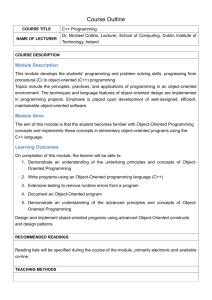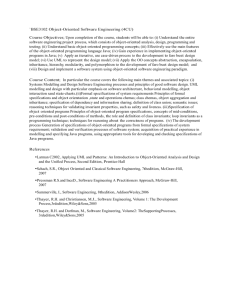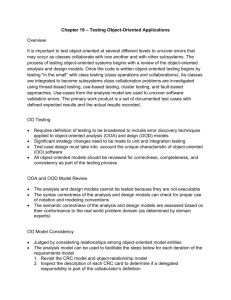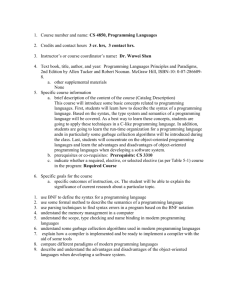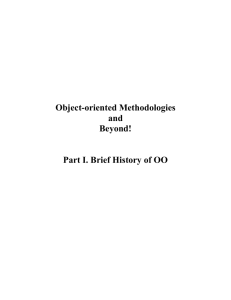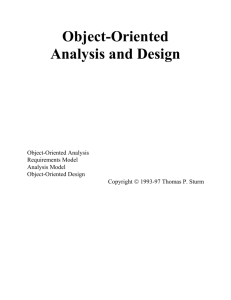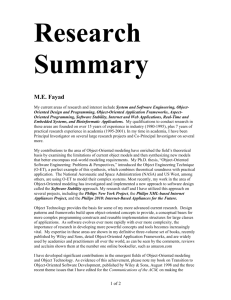objects explanation
advertisement
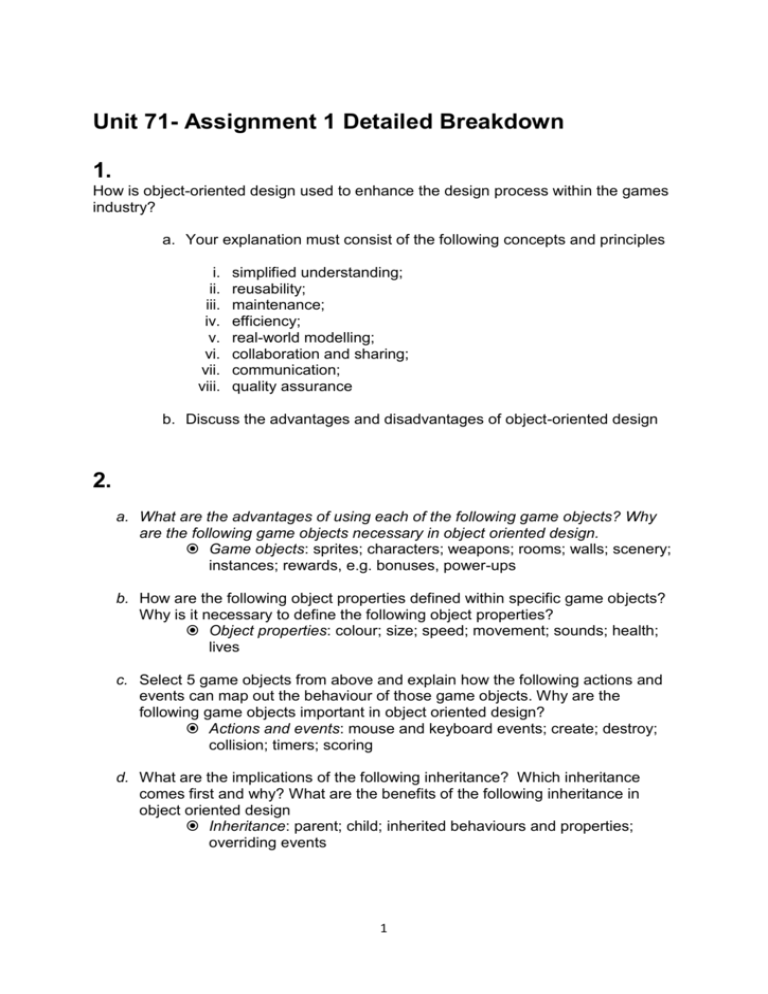
Unit 71- Assignment 1 Detailed Breakdown 1. How is object-oriented design used to enhance the design process within the games industry? a. Your explanation must consist of the following concepts and principles i. ii. iii. iv. v. vi. vii. viii. simplified understanding; reusability; maintenance; efficiency; real-world modelling; collaboration and sharing; communication; quality assurance b. Discuss the advantages and disadvantages of object-oriented design 2. a. What are the advantages of using each of the following game objects? Why are the following game objects necessary in object oriented design. Game objects: sprites; characters; weapons; rooms; walls; scenery; instances; rewards, e.g. bonuses, power-ups b. How are the following object properties defined within specific game objects? Why is it necessary to define the following object properties? Object properties: colour; size; speed; movement; sounds; health; lives c. Select 5 game objects from above and explain how the following actions and events can map out the behaviour of those game objects. Why are the following game objects important in object oriented design? Actions and events: mouse and keyboard events; create; destroy; collision; timers; scoring d. What are the implications of the following inheritance? Which inheritance comes first and why? What are the benefits of the following inheritance in object oriented design Inheritance: parent; child; inherited behaviours and properties; overriding events 1 Assessment and grading criteria P1 describe the purpose of object-oriented design for games with some appropriate use of subject terminology M1 explain the purpose of object-oriented design for games with reference to detailed illustrative examples and with generally correct use of subject terminology D1 comprehensively explain the purpose of object oriented design for games with elucidated examples and consistently using subject terminology correctly P1_M1_D1 must cover the following detailed breakdown P1: you will give accurate and substantially complete descriptions of what objects are in general terms (for example, a reusable element of a game such as a car) and how object-oriented design is used to enhance the design process within the games industry. You will discuss only the main concepts and advantages and must use some appropriate technical terms in your explanation (for example, efficiency, ease of maintenance). When explaining the purpose of object-oriented design, a pass grade learner might write, ‘The purpose of object-oriented design within games is to allow for efficient and easy extension or upgrades to a game.’ M1: when explaining the purpose of object-oriented design, you will select specific appropriate examples to demonstrate how objects can be reused within a game (for example, specific characters and their attributes and behaviours). The explanation will be comprehensive and use appropriate terminology to describe the advantages of using an object-oriented approach to design. A merit grade learner might write, ‘Object oriented design is used within a board game where by modifying the playing pieces used, the game function can be easily changed. For example, by replacing draughts pieces with chess pieces the game can change from chess to draughts.’ D1: You will explain with supporting arguments why object-oriented design is the best approach to game design, citing specific examples of how time and cost can be saved through the efficient reuse of code. The arguments made by you will be clear and expressed using fluent technical language. It will be evident that the examples and explanation express your personal understanding. When explaining the purpose of object-oriented design, a distinction grade learner might write, ‘Object-oriented design promotes greater flexibility in game programming, by permitting well designed classes to be instantiated as objects which interact during the moment of gameplay. The reuse of the classes gives economies in development time during the development of a single game, and the code itself can be reused in subsequent game development whether for a sequel or not. The classes can be used as base implementations in any game that requires them, though a minimum of additional programming may be needed to optimise them to the new game. The reuse of classes gives logical and visual placeholders which speed up game development. 2



